Abstract
Experiments were done on rats to investigate the nature of the renal response to metabolic acidosis and the changes in enzyme activity associated with increased ammoniagenesis.
When metabolic acidosis was induced with oral feeding of ammonium chloride for 48 hr, there was an increase of activity of the enzyme phosphoenolpyruvate carboxykinase (PEPCK) in whole kidneys as well as in the kidney cortex. There was no change in PEPCK in liver, and glucose-6-phosphatase showed no change in kidney or liver in response to metabolic acidosis.
The increase in PEPCK activity in kidney cortex varied with the degree of acidosis and there was a close correlation between cortical PEPCK activity and urinary ammonia. Kidney cortex mitochondrial PEPCK did not change in response to metabolic acidosis. An increase in PEPCK occurred as early as 6 hr after NH4Cl feeding, before there was any increase in kidney glutaminase I activity.
Rats fed sodium phosphate, or given triamcinolone intramuscularly, developed a metabolic alkalosis, but there was increased urinary ammonia and an increase in activity of renal cortical PEPCK. Triamcinolone plus ammonium chloride induced a greater increase of PEPCK activity than triamcinolone by itself; on the contrary, the rise of glucose-6-phosphatase induced by triamcinolone was not enhanced by acidosis. Glucose-6-phosphatase from control and acidotic rats had identical kinetic characteristics.
The results indicate that increased PEPCK activity is constantly related to increases of urinary ammonia. It is proposed that the increase of PEPCK activity is the key event in the ammoniagenesis and gluconeogenesis which follow on metabolic acidosis.
Full text
PDF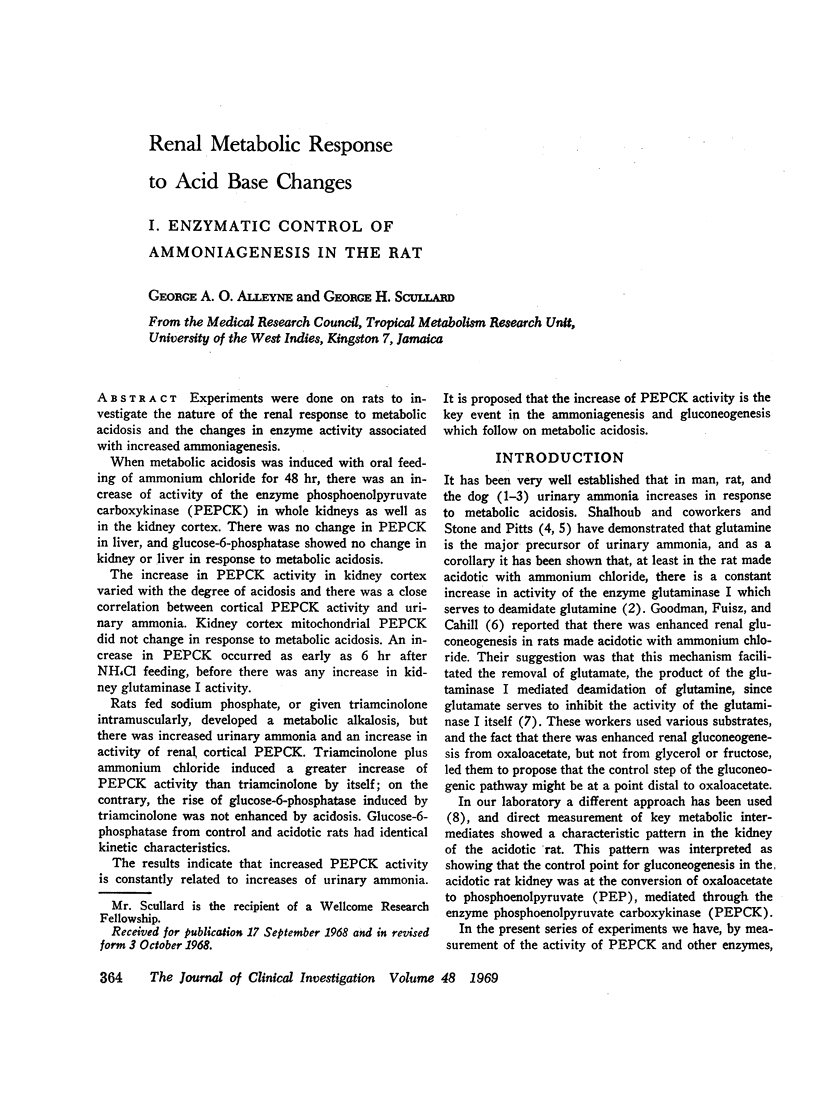
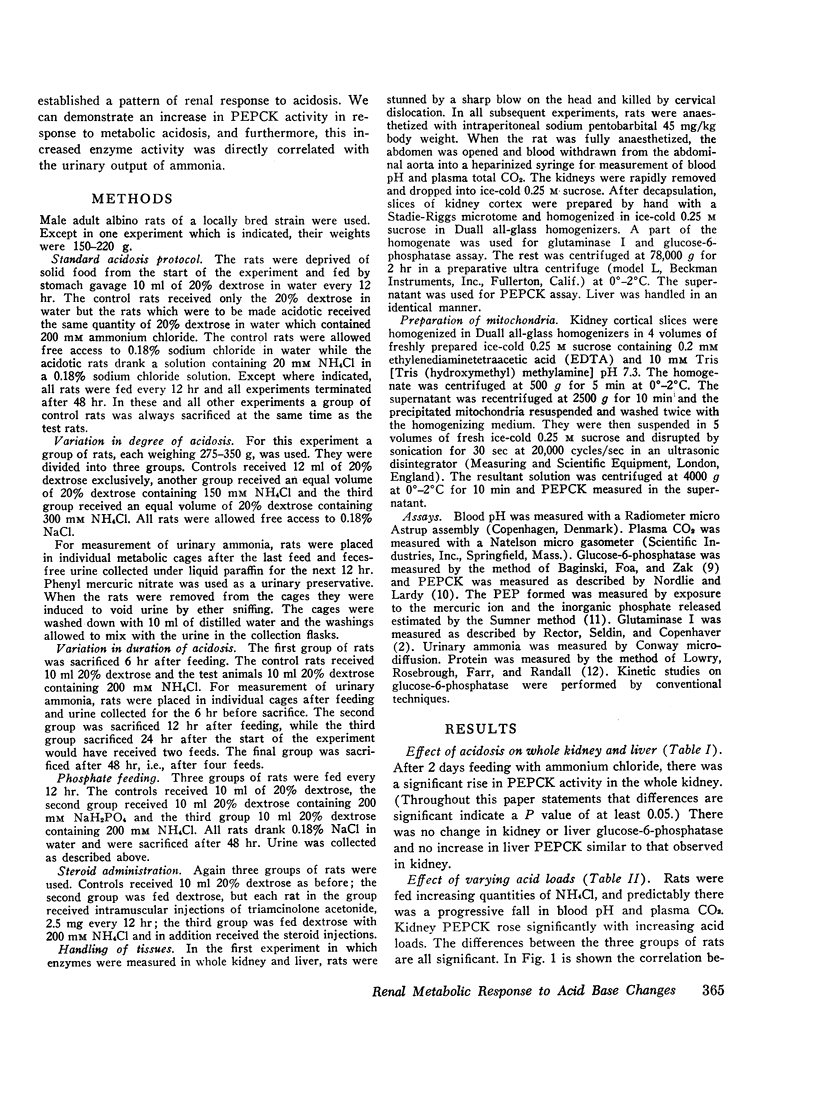
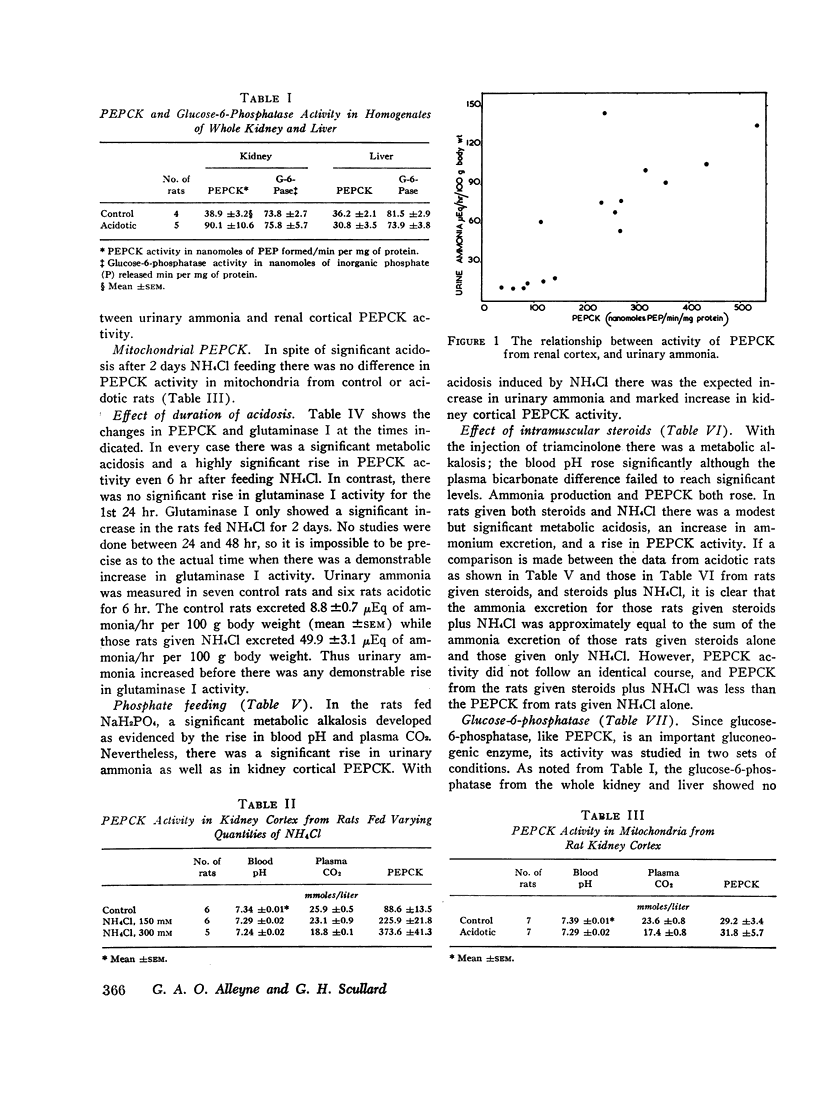
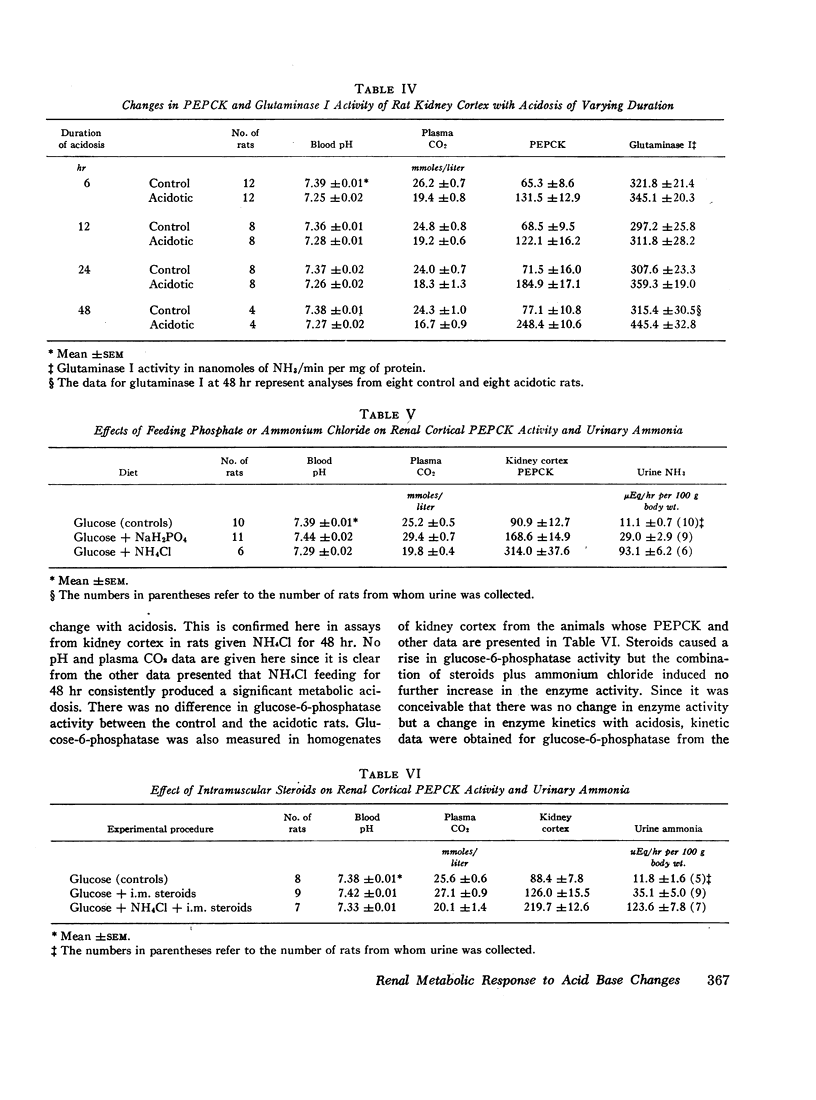
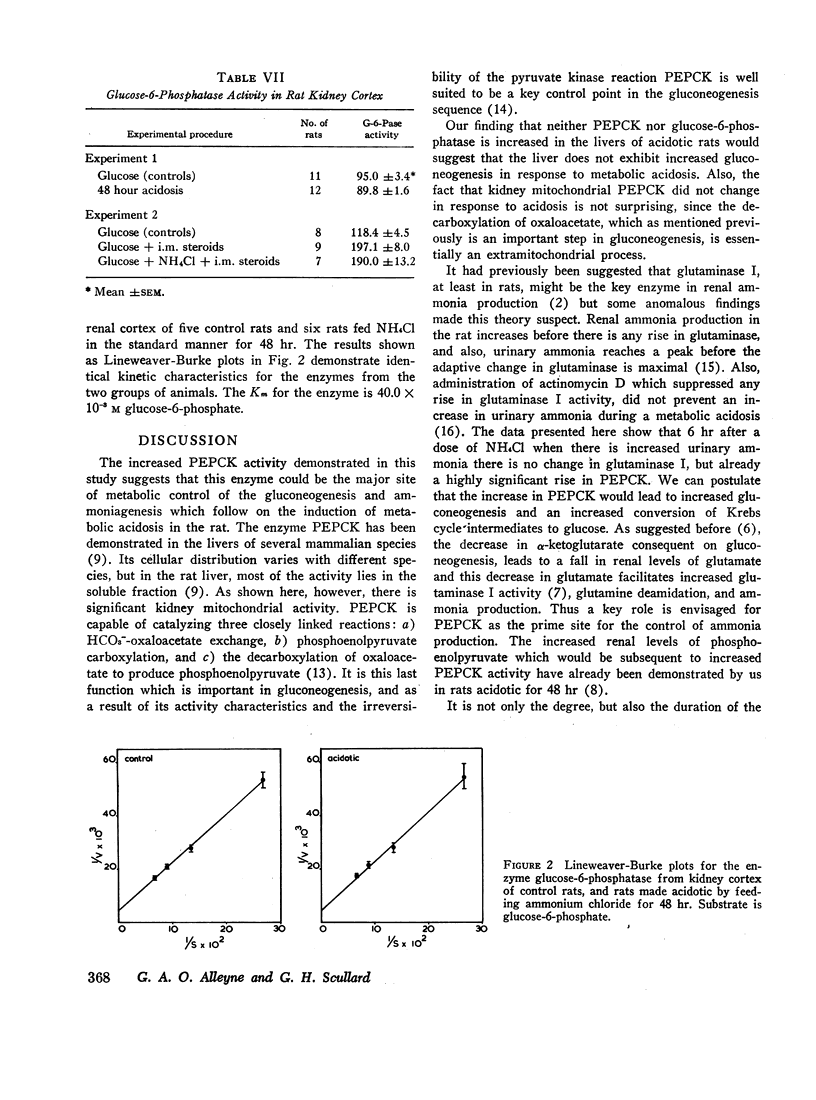
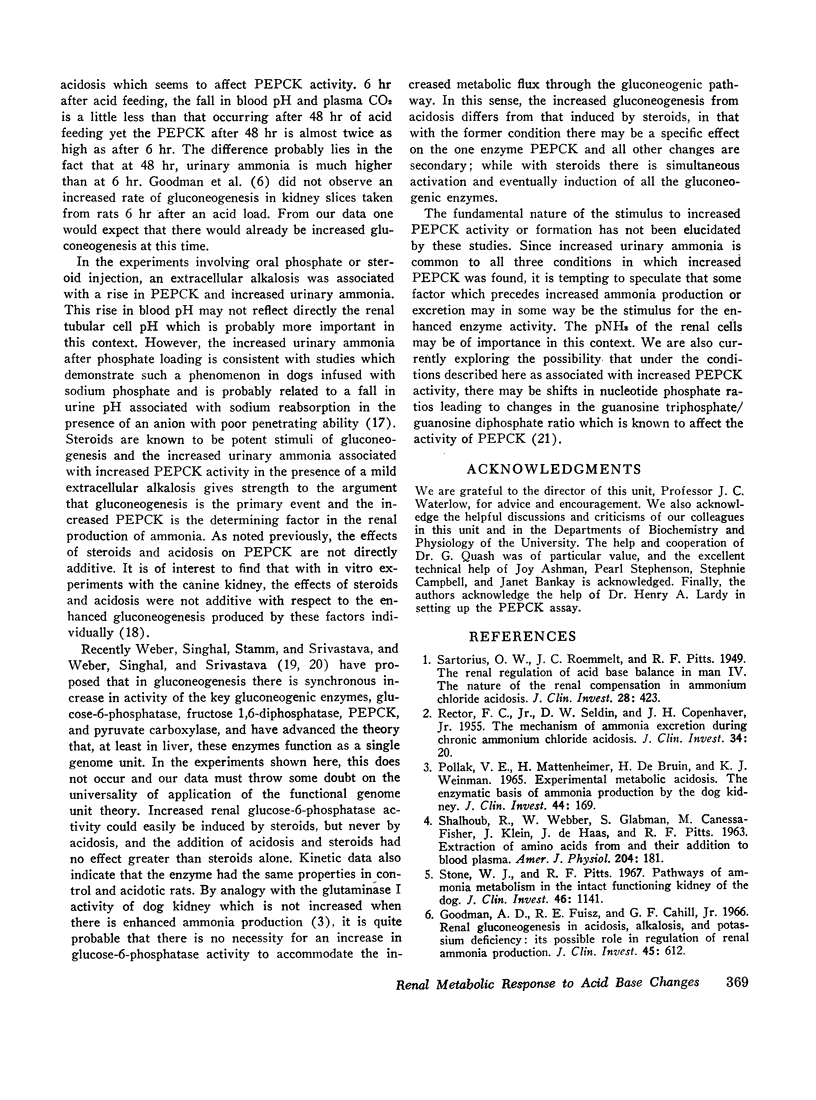
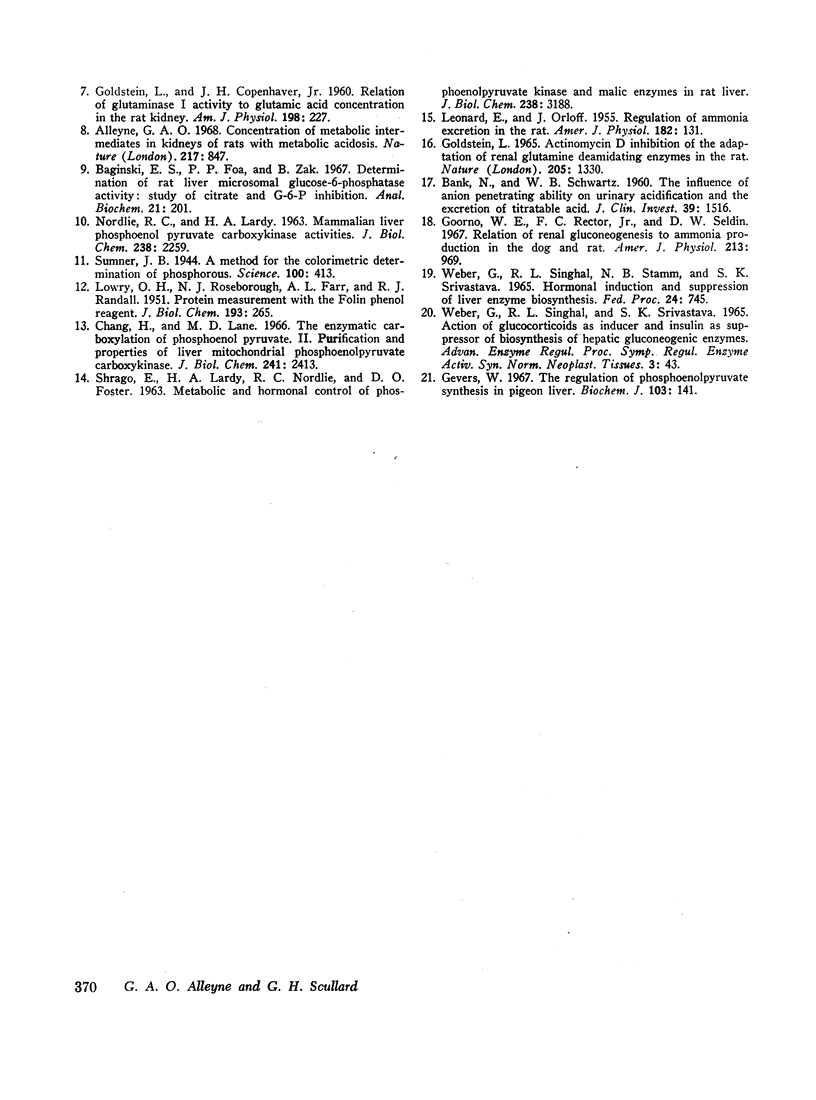
Selected References
These references are in PubMed. This may not be the complete list of references from this article.
- Alleyne G. A. Concentrations of metabolic intermediates in kidneys of rats with metabolic acidosis. Nature. 1968 Mar 2;217(5131):847–848. doi: 10.1038/217847a0. [DOI] [PubMed] [Google Scholar]
- BANK N., SCHWARTZ W. B. The influence of anion penetrating ability on urinary acidification and the excretion of titratable acid. J Clin Invest. 1960 Oct;39:1516–1525. doi: 10.1172/JCI104171. [DOI] [PMC free article] [PubMed] [Google Scholar]
- Baginski E. S., Foà P. P., Zak B. Determnation of rat liver microsomal glucose-6-phosphatase activity: study of citrate and G-6-P inhibition. Anal Biochem. 1967 Nov;21(2):201–207. doi: 10.1016/0003-2697(67)90181-9. [DOI] [PubMed] [Google Scholar]
- Chang H. C., Lane M. D. The enzymatic carboxylation of phosphoenolpyruvate. II. Purification and properties of liver mitochondrial phosphoenolpyruvate carboxykinase. J Biol Chem. 1966 May 25;241(10):2413–2420. [PubMed] [Google Scholar]
- GOLDSTEIN L., COPENHAVER J. H., Jr Relation of glutaminase I activity to glutamic acid concentration in the rat kidney. Am J Physiol. 1960 Feb;198:227–229. doi: 10.1152/ajplegacy.1960.198.2.227. [DOI] [PubMed] [Google Scholar]
- Gevers W. The regulation of phosphoenolpyruvate synthesis in pigeon liver. Biochem J. 1967 Apr;103(1):141–152. doi: 10.1042/bj1030141. [DOI] [PMC free article] [PubMed] [Google Scholar]
- Goodman A. D., Fuisz R. E., Cahill G. F., Jr Renal gluconeogenesis in acidosis, alkalosis, and potassium deficiency: its possible role in regulation of renal ammonia production. J Clin Invest. 1966 Apr;45(4):612–619. doi: 10.1172/JCI105375. [DOI] [PMC free article] [PubMed] [Google Scholar]
- Goorno W. E., Rector F. C., Jr, Seldin D. W. Relation of renal gluconeogenesis to ammonia production in the dog and rat. Am J Physiol. 1967 Oct;213(4):969–974. doi: 10.1152/ajplegacy.1967.213.4.969. [DOI] [PubMed] [Google Scholar]
- LEONARD E., ORLOFF J. Regulation of ammonia excretion in the rat. Am J Physiol. 1955 Jul;182(1):131–138. doi: 10.1152/ajplegacy.1955.182.1.131. [DOI] [PubMed] [Google Scholar]
- LOWRY O. H., ROSEBROUGH N. J., FARR A. L., RANDALL R. J. Protein measurement with the Folin phenol reagent. J Biol Chem. 1951 Nov;193(1):265–275. [PubMed] [Google Scholar]
- NORDLIE R. C., LARDY H. A. Mammalian liver phosphoneolpyruvate carboxykinase activities. J Biol Chem. 1963 Jul;238:2259–2263. [PubMed] [Google Scholar]
- POLLAK V. E., MATTENHEIMER H., DEBRUIN H., WEINMAN K. J. EXPERIMENTAL METABOLIC ACIDOSIS: THE ENZYMATIC BASIS OF AMMONIA PRODUCTION BY THE DOG KIDNEY. J Clin Invest. 1965 Feb;44:169–181. doi: 10.1172/JCI105132. [DOI] [PMC free article] [PubMed] [Google Scholar]
- RECTOR F. C., Jr, SELDIN D. W., COPENHAVER J. H. The mechanism of ammonia excretion during ammonium chloride acidosis. J Clin Invest. 1955 Jan;34(1):20–26. doi: 10.1172/JCI103058. [DOI] [PMC free article] [PubMed] [Google Scholar]
- SHRAGO E., LARDY H. A., NORDLIE R. C., FOSTER D. O. METABOLIC AND HORMONAL CONTROL OF PHOSPHOENOLPYRUVATE CARBOXYKINASE AND MALIC ENZYME IN RAT LIVER. J Biol Chem. 1963 Oct;238:3188–3192. [PubMed] [Google Scholar]
- Sartorius O. W., Roemmelt J. C., Pitts R. F., Calhoon D., Miner P. THE RENAL REGULATION OF ACID-BASE BALANCE IN MAN. IV. THE NATURE OF THE RENAL COMPENSATIONS IN AMMONIUM CHLORIDE ACIDOSIS. J Clin Invest. 1949 May;28(3):423–439. doi: 10.1172/JCI102087. [DOI] [PMC free article] [PubMed] [Google Scholar]
- Stone W. J., Pitts R. F. Pathways of ammonia metabolism in the intact functioning kidney of the dog. J Clin Invest. 1967 Jul;46(7):1141–1150. doi: 10.1172/JCI105607. [DOI] [PMC free article] [PubMed] [Google Scholar]
- Sumner J. B. A METHOD FOR THE COLORIMETRIC DETERMINATION OF PHOSPHORUS. Science. 1944 Nov 3;100(2601):413–414. doi: 10.1126/science.100.2601.413. [DOI] [PubMed] [Google Scholar]
- WEBER G., SINGHAL R. L., STAMM N. B., SRIVASTAVA S. K. HORMONAL INDUCTION AND SUPPRESSION OF LIVER ENZYME BIOSYNTHESIS. Fed Proc. 1965 May-Jun;24:745–754. [PubMed] [Google Scholar]


